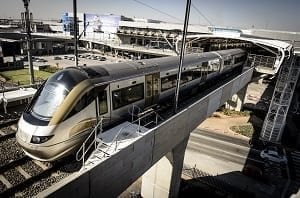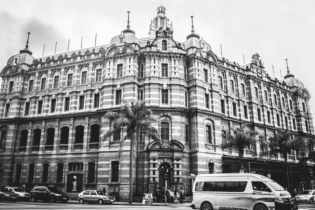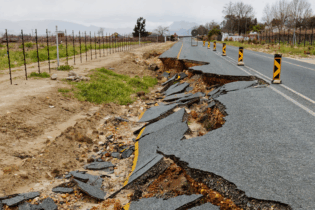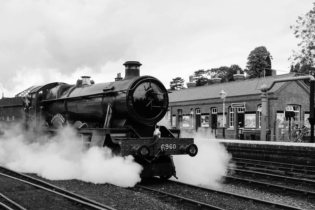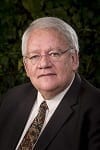 Gautrain Management Agency (GMA) CEO, Jack van der Merwe, discusses Gautrain’s economic impact with Tristan Wiggill.
Gautrain Management Agency (GMA) CEO, Jack van der Merwe, discusses Gautrain’s economic impact with Tristan Wiggill.
How does the GMA interpret KPMG’s Economic Impact Study (EIS) findings?
JVDM: When the idea of Gautrain was first tabled, it was founded on the premise that it would be a Blue IQ project. This is a long-term economic growth project that focuses on growing the economy of Gauteng to the benefit of the rest of the country.
Supporting this goal, the extensive EIS report indicates that growth around the stations has been rapid. We’ve invested R27 billion and we’ve gotten back R47 billion already. This impressive return of investment justifies the government’s decision. Theoretically, we are looking for transit-oriented development. We plan to build 18 to 19 new stations. However, the fight is to get the stations closer to where people are living – the inverse of what happened during the initial public participation process.
We are pleasantly surprised at the magnitude of the impact and how quickly it has happened. An average of 50% of the land was undeveloped within a two kilometre radius of the stations, rising to 75% at a five kilometre radius – so, there was opportunity to develop. While there have always been geometric requirements for stations, there are now economic requirements as well.
Which aspect(s) of the EIS findings are you most happy with?
Initially, people were very scared of having a transport corridor so close – thinking that property values would decrease. This study has shown that there is no need to fear. We’ve found that, all over the world, people assimilate fixed rail into the fibre of their cities; which is now confirmed in South Africa.
What do the results mean for Gautrain, the GMA, and for provincial and national public transport projects in general?
The results are positive. Heavy rail represents a massive investment, but this investment is justified as it has a greater capacity to transport people than alternative modes of transport. The report is encouraging as it shows that we have examined the scenario and seen that it works.
Will the EIS results fast track rapid rail expansion projects in the province?
Normally, these would suggest positive growth; however, South Africa, alongside the rest of the world, is in a financial bind. Thus, such projects are queued up for completion. Jabu Moleketi always said that governing means prioritising. We need to consider not only value for money, affordability, and risk transfer, but also economic benefit.
How will services be expanded?
We’ve developed an Integrated Transport Master Plan, which we call ITMP25. The area between Lanseria, Tshwane, O.R. Tambo, and Johannesburg houses 80 units per hectare. These numbers justify mass transit. Thus, the ITMP25 proposes a line from Mamelodi down to Naledi and to the west of Johannesburg. This is the line that we’re investigating now and we may link it, via Randburg, to Sandton and extend the existing line from the airport to Boksburg.
We’re considering extending the current line from Park Station, underneath the city, to the M2. We’ve upgraded the demand model and will get the results soon. We are discussing this matter with the three metros and Mogale City. The corridor will have to be between the N14, past Diepsloot, and along the Western Bypass of Johannesburg. Another line is going to run somewhere in-between there and continue past Pretoria, east into Mamelodi.
How will you convert dyed-in-the-wool car users?
Public transport is a carrot-and–stick situation, where neither works without the other. The stick, if one looks overseas, is congestion pricing. Another consideration is the capacity of the Ben Schoeman highway. We are running at 99% availability norms, and 98.5% punctuality norms. We predicted that, by 2020, 75% of passengers would be car owners leaving their cars at home – five years later it’s at 77%. Public transport must be made the mode of choice.
Will similar rapid rail services emerge in other provinces?
Dube Tradeport wants to put in a light rail from King Shaka International to Durban. Cape Town could warrant one, as well. It’s an expensive investment and you have to have the numbers to justify it. As such, big metropolitan areas are likely candidates.
Is there a need for a rapid rail link between provinces?
A new freight line from Durban to Johannesburg will be used to run sleeper trains. Long-distance passenger travel has developed such that trains are capable of travelling at 300km/h, or more. However, to travel at 300km/h, the geometric design has to be very strict and costs a fortune. To mirror the freight line would require building tunnels and bridges right through the Drakensberg and we simply don’t have the volumes.
Do you view Bus Rapid Transit (BRT) as competition?
Public transport can only work if it’s an integrated system, with synergy between modes. We have three BRTs in the area in which the train operates. People will take the BRT to the station, ride the train to Pretoria, and then use BRT there. One mode feeds off the other.
What is needed to ensure the continued popularity of rapid rail services?
We run 6 500 trains per month; the challenge is to run them punctually, to maintain cleanliness, and to keep them safe and secure. Creating a safe and predictable environment is essential. Soft issues determine success – you can’t spend a lot of money on infrastructure and then forget about the operations.
What is in the ticketing and payment method pipeline?
Our regulations and specifications have been developed by the Department of Transport (DoT). We are working towards a single ticket and interoperability system. We will probably be there in about 18 months’ time. The idea is that you would be able to use a single ticket for Gautrain, Metrorail, the BRTs, and maybe even for taxis. Fare harmonisation is an issue, because it requires a back office and there has to be a body that cross-subsidises and handles the money. The DoT has created a transport commission as the first step in creating a transport authority for Gauteng.
What does the future of public transport look like in Gauteng?
Economies of scale mean we are fixed into BRT for public transport, and the recapitalised metro rail for heavy rail. We are trying to get an economic model for taxis. We’re negotiating subsidised buses. We’ve announced that these are the modes that we’re going to develop. However, making the modes greener will be challenging.
How will Gautrain be incorporated into the aerotropolis?
We’re already at the airport and are negotiating extensions. We’ve been asked us to supply a station on the eastern side of O.R. Tambo, which is part of the planning we’re doing at the moment. The aerotropolis has time contours around it. The better the connectivity, the wider the circles are. Sandton is 15 minutes from the aerotropolis, by Gautrain.
Will Gautengers ever be able to live completely car-free?
Transport is about supply and demand. While I’d like Gautengers to not have to use their vehicles in peak periods, current supply is more than the demand for 18 hours of every day. I can see a reduction in car ownership but not a total move away from it.
 Gautrain Management Agency (GMA) CEO, Jack van der Merwe, discusses Gautrain’s economic impact with Tristan Wiggill.
Gautrain Management Agency (GMA) CEO, Jack van der Merwe, discusses Gautrain’s economic impact with Tristan Wiggill.

